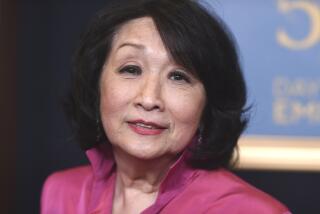Column: Vulnerable young women. A gynecologist accused of violating them. Where was USC?

You take off your clothes, and put on a thin cotton gown. You sit on a padded table covered with a crisp white piece of paper that crackles every time you move. Your bare feet dangle. You stare at the walls and wait. And wait.
Then the doctor walks in. If the doctor is a man, he comes in with a female chaperone. The doctor tells you to lie back, put your legs in the metal stirrups on either side of the table and scoot down. Toward him.
“A little more, a little more,” the doctor will say, until it feels like your bottom is sliding off the table.
Rarely does a woman feel more vulnerable than when visiting a gynecologist. She steels herself, knowing she will be penetrated. If she is in for a PAP smear, she knows it’s going to hurt, maybe a lot.
But she expects to be treated gently and with respect. She trusts the doctor will be professional and not make jokes about how “tight” her vagina is, or how attractive she is or how smooth her skin is.
When a woman is young, the experience can be slightly terrifying. When she is older, she is perhaps no longer terrified, but still mortified that someone who is not an intimate partner is touching her in a deeply private place. She grits her teeth and hopes the exam ends quickly.
I think this is why revelations about the alleged bad behavior of a longtime male gynecologist at USC’s student health clinic hit me so hard. They come on the heels of the terrible news out of Michigan State University about Larry Nassar, the cruelly abusive osteopathic physician who sexually brutalized hundreds of women, including America’s top female gymnasts, and will probably end up dying in prison.
In an investigation published this week, my colleagues Harriet Ryan, Paul Pringle and Matt Hamilton reported that, for years, students and chaperones lodged complaints about USC physician George Tyndall, the clinic’s only full-time gynecologist. They said he made sexually charged remarks about his patients’ bodies, touched them inappropriately during pelvic exams and photographed their genitals. Some of his colleagues feared that he singled out Chinese students with limited English, who may not have known what was proper and what was not.
I will tell you this, though: If a doctor did to my daughter what Tyndall did to his patients, I would urge her to file a sexual assault complaint. With police. Not with USC, which allowed Tyndall’s misconduct to go on for decades.
::
As The Times discovered, Tyndall had been the subject of numerous complaints from nurses and medical assistants who served as chaperones in his exam room.
Imagine that: A clinic puts a chaperone in a room for protection and when the chaperone reports questionable behavior by the doctor, the clinic ignores it. What, then, is the actual point of having chaperones in the exam room? And who, actually, is being protected? (Cynical answer: doctors.)
A number of chaperones reported that they were bothered by the way Tyndall would insert his fingers into women’s vaginas before inserting a speculum to check their cervixes.
Despite numerous complaints, university and clinic administrators allowed Tyndall to keep practicing until a frustrated nurse reported his behavior to the campus rape crisis center in 2016, my colleagues reported.
I’d like to single her out as a hero of this tale. Her name is Cindy Gilbert. She had reported Tyndall’s behavior on multiple occasions, but no one seemed interested until she found an ally in Ekta Kumar, executive director of the rape crisis center.
This time, USC officials concluded that the doctor’s behavior was outside the scope of current medical practice and amounted to sexual harassment. And yet, none of Tyndall’s patients over nearly three decades at the university was notified; he was allowed to quietly resign in 2017.
This is yet another black eye for USC, which allowed substance-abusing retina surgeon Carmen Puliafito to remain on its medical school faculty and continue to accept new patients after he resigned as dean of the medical school. His resignation followed the drug overdose of a young woman in his hotel room.
Perhaps Tyndall did not brutalize young women the way that Nassar did. And maybe, unlike Nassar, Tyndall won’t be prosecuted.
That’s too bad. If what he is accused of is true, then he routinely violated the bodies, and the trust, of the vulnerable young women who were his patients. No one in a position powerful enough to stop him wanted to believe it.
Now, generations of his patients are reading the news stories, reliving his touch and wondering what they should have done.
“I felt ashamed that I let that happen to me,” one of his former patients told The Times. “More than anything, I was mad at USC for allowing that to happen.”
Twitter: @AbcarianLAT
More to Read
Sign up for Essential California
The most important California stories and recommendations in your inbox every morning.
You may occasionally receive promotional content from the Los Angeles Times.











